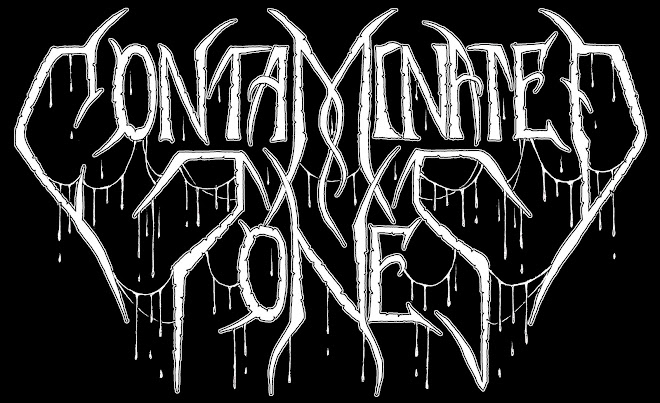 High Priestess NightHawk is still at helm, belting out lovely cadences and supplying a majority of the rhythmic work on bass. There have been changes in the trio's lineup with Archbishop Barghest on guitar taking over for Rattlesnake and Siren Tempestas replacing Bearadactyl (sad to see him go as his was easily one of the best names I've heard in a while). From the immediate lashings of "Key And Bone" the decadent wall of sound on Chassit looms. Heavily over driven bass, with occasional effects - possibly a chorus and flange pedal mixture of sorts - is very upfront in the mix with guitars filling in a lot of the space behind and supplying hums, buzzes, ghost tones and other psychedelia. Notable is the distant snare giving a very "live" atmosphere to the heavy and hot mix. From the first musings of "Key and Bone," NightHawk's vocals stand out. There is an unrestrained intensity and allure to her commanding vocal style.
High Priestess NightHawk is still at helm, belting out lovely cadences and supplying a majority of the rhythmic work on bass. There have been changes in the trio's lineup with Archbishop Barghest on guitar taking over for Rattlesnake and Siren Tempestas replacing Bearadactyl (sad to see him go as his was easily one of the best names I've heard in a while). From the immediate lashings of "Key And Bone" the decadent wall of sound on Chassit looms. Heavily over driven bass, with occasional effects - possibly a chorus and flange pedal mixture of sorts - is very upfront in the mix with guitars filling in a lot of the space behind and supplying hums, buzzes, ghost tones and other psychedelia. Notable is the distant snare giving a very "live" atmosphere to the heavy and hot mix. From the first musings of "Key and Bone," NightHawk's vocals stand out. There is an unrestrained intensity and allure to her commanding vocal style. Initially NightHawk's vocals are tied to the chord progressions but come "Ursa Machina" and especially "in The Court Of The Bastard King" (yes - I looked for obvious King Crimson nods but found none) there is an overall looser and experimental flair. Heavy Temple offer an originality in the spacey vibe they softly convey through the guitar and bass effects and the steamy recording. It's true in terms of sheer riffing and structure of compositions Heavy Temply fall short on originality, jumping into new riffs through use of common transitional methods and essentially jamming about for prolonged periods of times across fairly standard motifs and keys but the riffs are cleanly written and smooth. The grit and caked on scuzz of excellent tone help the material rise above. Heavy Temple do their doom well. The single most unique section of the EP is the first minute or two of second track "Ursa Machina," with a big tense formation built on a simple four note bass pattern with a dramatic half-step drop.
Heavy Temple conjure the images their moniker would want you to formulate: Smoke drenched biker bars along forgotten stretches of cracked highway; hazy hissing amplifier tubes droning behind the occasional crackle of unintended instrument noise; a sweaty greasy mechanic in a straw hat and oil-soaked overalls sips whisky along a splintered bar top; empty booths against a far wall trapping wisps of unknown ethers; the trio that rolled in on a cloud of van-dust filling the space between normally disparate images with that ephemeral glue that could only seep out of their hands; a small child in worn and patched jeans and a crisp white tank top playing in the corner while her mom works the bar, beading droplets of moisture on tanned skin glistening as another cold round gathers condensation.






